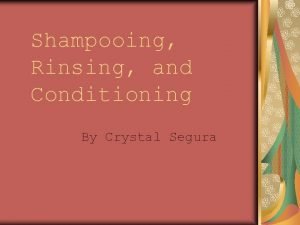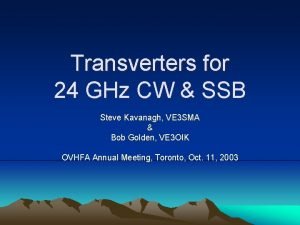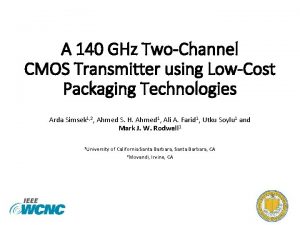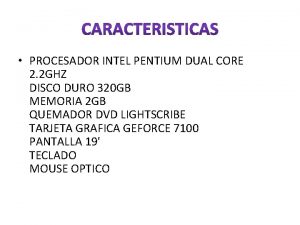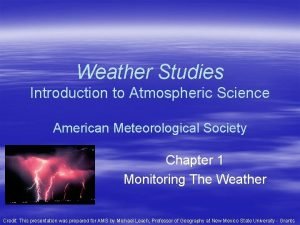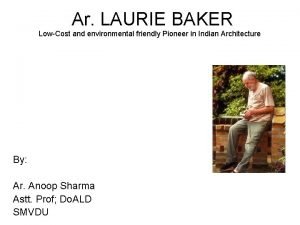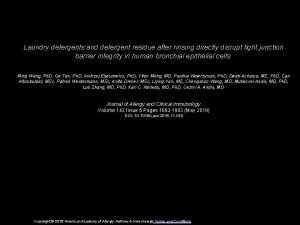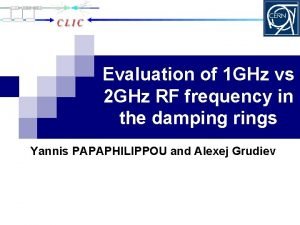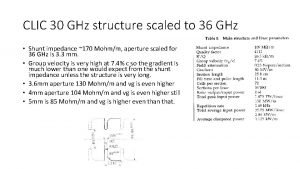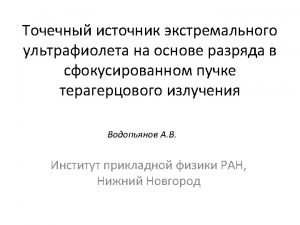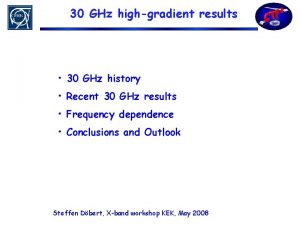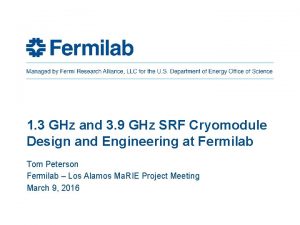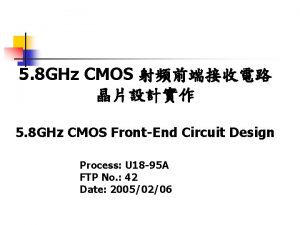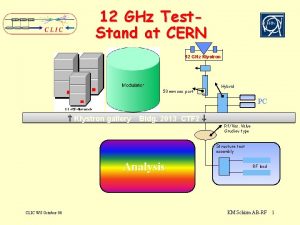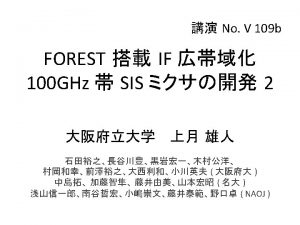HF rinsing studies of 1 3 GHz single













- Slides: 13

HF rinsing studies of 1. 3 GHz single cells A. Romanenko

Motivation • Anodizing experiments (Eremeev et al, SRF’ 2005, Tu. AO 8; Ciovati et al, PRST AB 10, 062002 (2007)) demonstrated that the depth of the layer modified by 120 C baking is about 20 nm • Distribution of lossy layers within this depth can be explored by step-by-step material removal – HF rinsing as a tool for that • Maybe maximization of medium Q 0 possible in the process – “selecting” the highest Q layer 6/19/2021 A. Romanenko

Anodizing experiments Eremeev et al, SRF’ 2005, Tu. AO 8 Fine grain EP cavity 6/19/2021 Ciovati et al, PRST AB 10, 062002 (2007) Large grain BCP cavity A. Romanenko

HF rinse - principle ~5 nm Water rinse grows new oxide layer Nb 2 O 5 RF layer Nb HF acid dissolves natural oxide layer ~2 nm Nb 2 O 5 RF layer Nb Nb ~2 nm Each HF/water rinse step consumes about 2 nm of niobium from the top of the RF layer determining the surface resistance and moves deeper into the bulk – depth profiling of the losses 6/19/2021 A. Romanenko

HF rinse procedure Filling with HF 5 minutes hold DI water rinse 6/19/2021 A. Romanenko HF dumping

Reproducibility 6/19/2021 A. Romanenko

Results on EP fine grain (tumbled) ü Single HF rinse after mild baking significantly improves medium field Q 0 ü Multiple HF rinse cycles do bring the high field Q-slope back ü Onset field is still higher than before baking by ~25 m. T after total 5 HF rinse cycles ü Further rinses in queue 6/19/2021 A. Romanenko

Results on EP fine grain cavity ü Single HF rinse improves low and medium field Q 0 ü Six HF rinses do bring the high field Q-slope back but with the higher onset (~125 m. T vs 100 m. T) 6/19/2021 A. Romanenko

Results on BCP fine grain cavity ü Single and double HF rinse cycles significantly improve medium field Q 0 ü High field Q-slope is present after mild baking 6/19/2021 A. Romanenko

Development of higher Q recipe for Project X 35% 30% T=2 K 11% T=2 K • FNAL single cell data -> single HF rinse (5 min) followed by water rinse is beneficial for the medium field Q value – gains of up to 35% measured at 70 m. T

Possible interpretation After 120 C ~5 nm Nb 2 O 5 Layer of high residual losses Baking modified no HFQS losses Nb ~20 nm Bulk – susceptible to HFQS losses 6/19/2021 +HF rinse Nb 2 O 5 Baking modified no HFQS losses • Literature – 120 C enhances residual resistance; possibly due to suboxide formation • Single HF rinsing and regrowing oxide – restores residual resistance to pre-bake state while keeping the improvement in RBCS +5 HF rinses Nb 2 O 5 Nb Bulk – susceptible to HFQS losses A. Romanenko B=B 0 exp(-z/l) Bulk – with HFQS losses An estimate of the remaining thickness from the HFQS onset: 125 m. T * exp (-h/l) = 100 m. T => h~8 nm

Conclusion • HF profiling results are so far consistent with the layer of 10 -20 nm being modified by mild baking • Practically - single HF rinse/DI water rinse after 120 C mild baking appears to be a simple route to increase the medium field Q 0 by 10 -35% in fine grain cavities – Important for Project X and other CW projects 6/19/2021 A. Romanenko

Acknowledgements • J. Ozelis – cavity testing • A. Rowe, D. Bice, T. Reid, R. Murphy – cavity processing 6/19/2021 A. Romanenko
 Shampooing rinsing and conditioning
Shampooing rinsing and conditioning The monophasic liquid dosage form is solution
The monophasic liquid dosage form is solution 220 mhz transverter
220 mhz transverter From 12 to 140 ghz
From 12 to 140 ghz Intel pentium 2 ghz
Intel pentium 2 ghz Paradigm shift from women studies to gender studies
Paradigm shift from women studies to gender studies Single instruction single data
Single instruction single data Single channel single phase example
Single channel single phase example Von neumann architecture is sisd
Von neumann architecture is sisd Black studies and the racial mountain
Black studies and the racial mountain Nys social studies toolkit
Nys social studies toolkit Weather studies introduction to atmospheric science
Weather studies introduction to atmospheric science Communication studies sjsu
Communication studies sjsu Laurie baker institute
Laurie baker institute
